For six weeks every fall, the normally quiet Snohomish River Valley explodes into a ritualized celebration of fall as seven local “farms” open their corn mazes, pumpkin patches, sunflower fields, playgrounds, hayrides, and haunted houses to the throngs of people who push north out of the crowded suburbs of Seattle to enjoy a taste of Americana in our picturesque valley of verdant farmland ringed with snow-capped mountains. Most of the farms that host these “fall festivals” have been in the family for 100 years. At Stocker Farms, where I’ve worked the past two falls, Keith Stocker is a fourth generation farmer. He and Janet are no longer growing corn or milking cows like his parents and grandparents. He’s selling access to wholesome fun for families, including an increasing number of immigrants who have surged into the area to staff the tech hubs and airplane factories that drive the local economy.
The coming of the fall festivals transforms the valley. During the week, the farm is gently busy, with busloads of kids enjoying a field trip, young families enjoying their season passes, and couples taking photos. But on the weekends, it’s a different scene as thousands upon thousands of people pour into the valley. Local sheriffs direct traffic at the farm entrances but all their arm waving can’t prevent the major valley roads—Highway 9 and Marsh Road—from deadlock. If I don’t have to work, I avoid the valley like the plague.
This fall at Stocker Farms, I’m a cow train driver. Here’s the job: I load kids into a line of a dozen wheeled carts painted up to look like black-and-white cows, then I hop in an orange Kubota tractor and pull them around a fenced-in oval of lawn that I call the pasture. On weekdays or when the line is short, the kids get three laps, but on busy weekends I cut it down to two laps to keep things moving.
The first thing I do when I load up the cow train is assess the mental state of my passengers. The vast majority of the kids are excited, happy, eager to get their seatbelts fastened. “I can do it all by myself,” they tell me. “Of course you can,” I say, “you’re a big kid.”
Some of the kids, even the big kids, don’t get that chance at independence. Their parents are glued to their side, helping them select their cow and carefully ensuring that the seatbelt is in place before entrusting me to hurtle them around the cow pasture at a steady 3 miles an hour. I get to see all kinds of parenting.
The first lap is the most difficult, because I’ve got to take the measure of my passengers, carefully assessing each kid in my cow train, trying to gauge where they are on the terror-to-delight continuum. I keep one hand on the wheel and pivot my head back and forth, trying to manage the tractor’s path while eying up my young charges to be sure everything is okay.
The kids I worry about are the cryers. I’d say 10% of kids boarding the cow train are cajoled into this cow cart for a bumpy ride through the grass and they’re not sure they can handle it. Some are already crying as Mom (sometimes Dad) places them into their cow; some burst into tears once it becomes clear that Mom is leaving them alone.
I find myself rooting for Mom. If she can sneak away, her child is going to learn an important lesson: that they can survive on their own, that they’re capable of riding around in a string of plastic cows with a bunch of other kids in what is probably one of the safest places on earth. If the kid can’t make it here, it’s only going to get harder.
I keep a keen eye on all the kids on this first lap, because job one is keeping these kids safe. I’ve got to identify any potential troublemakers—very rare—and I’ve got to ensure that the cryers don’t become jumpers. I’ve only had three jumpers, but two of them came on the same ride.
On this trip I had somehow loaded two cryers in back-to-back cows. No sooner had I eased my tractor into motion than I could see that the front cryer was escalating: his cries were becoming screams and he was clawing at his seatbelt. That drove the kid behind into her own form of delirium, and she started to wriggle up and out of her seat. Before I could so much as ease up on the gas, these two were standing on their seats, getting ready to jump. In a job that’s really pretty mellow, this was a crisis. I eased the tractor to a stop, careful not to stop too fast and tip them out, and the activity attendant and I quickly ran to the kids, simultaneously waving to the frantic parents to come to the rescue.
Another time I’d gotten through the first lap safely, only to I look back and see that the first cow in the train was empty. What the hell? I looked left and right: I couldn’t see any escapees ... and then the kid popped his head up. He’d been hunkering down, hiding. It scared the crap out of me. He thought it was good fun.
For the most part, this job is a delight. There are a lot of first generation immigrants in our area and they come to the farm to get a taste of Americana. As often as not, there are more Koreans, Chinese, Africans, and Ukranians on my train than American kids, at least on the weekends. We’re offering them this sweet, idealized version of autumnal Americana, and even if it’s a little spun-up it’s also very real and very sincere and they’re eating it up. The parents and grandparents line the fence that surrounds the pasture, waving madly at the kids as they pass by. The kids laugh and wave back. I wave at the kids lined up for the next ride; they wave back to me. We’re all so damned happy. There’s no cynicism here, no politics. It’s a good scene. Every now and then I’ll get a kid who’s so enraptured by this experience that he doesn’t want to get off, and if I can manage it, I just let him ride and ride. His parents usually sit nearby, smiling, happy for the break. One red-headed girl went for six rounds, changing cows each round. She wanted to see how different each cow was. I would have let her ride forever.
Nine hours of cow train kind of scrambles my brain. The bouncing and the circling ... wooh, it makes me dizzy. One time I accidentally took a lap around the pasture with an empty train. I’d forgotten to board the kids! I laughed and waved to the kids in line when I realized my mistake. Oops. It’s times like this when I wonder if perhaps this isn’t quite how I want to spend my time during retirement. But I’ll get to that part soon, once November comes and the madness of the October agritourism biz starts to fade into memory.
There is one other nice thing about October here in the Pacific Northwest: the skies are clear and brilliant color comes to the mountains. The hiking is glorious and the post-hike fresh-hop beer tastes fantastic.

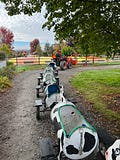

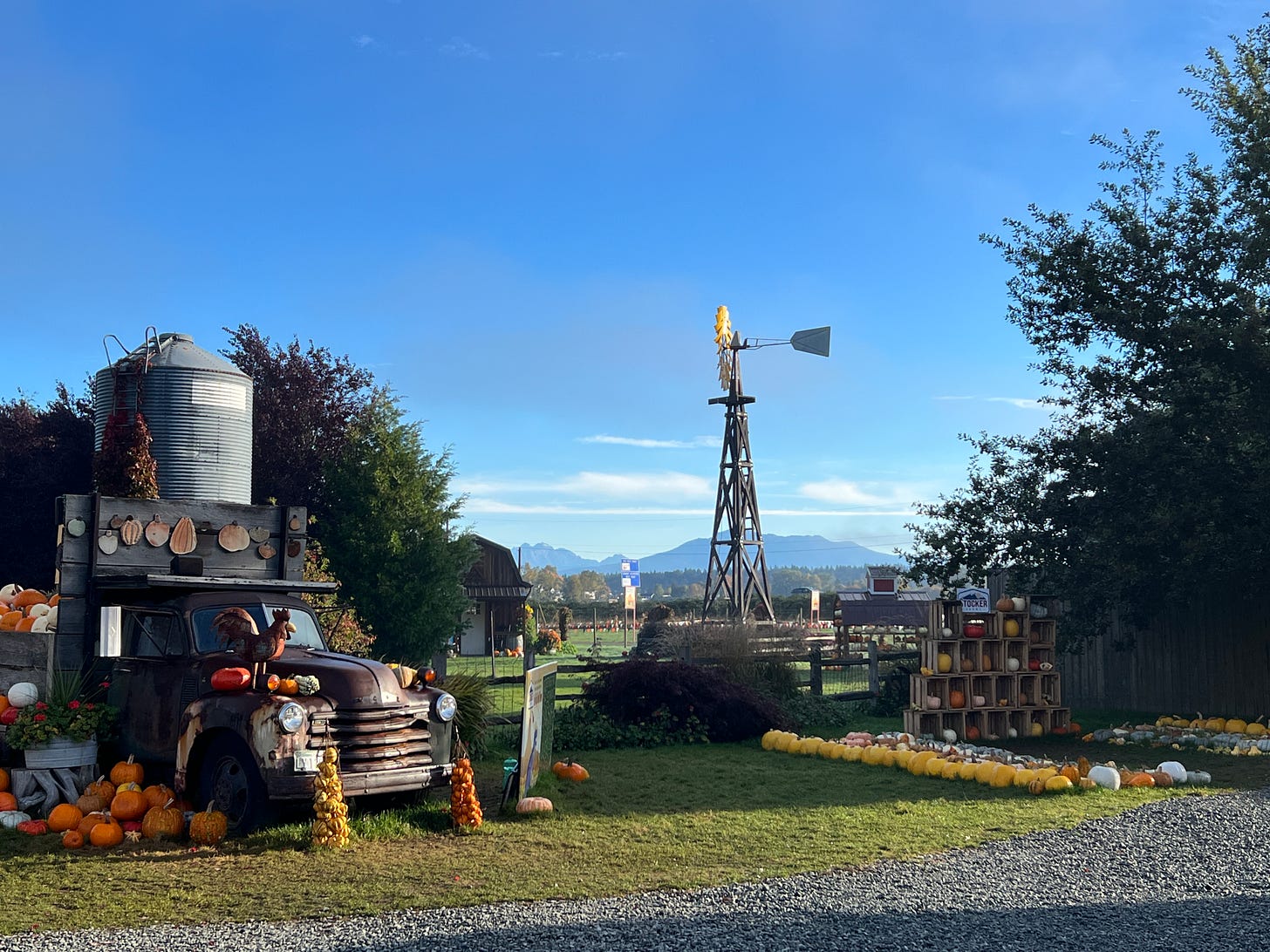


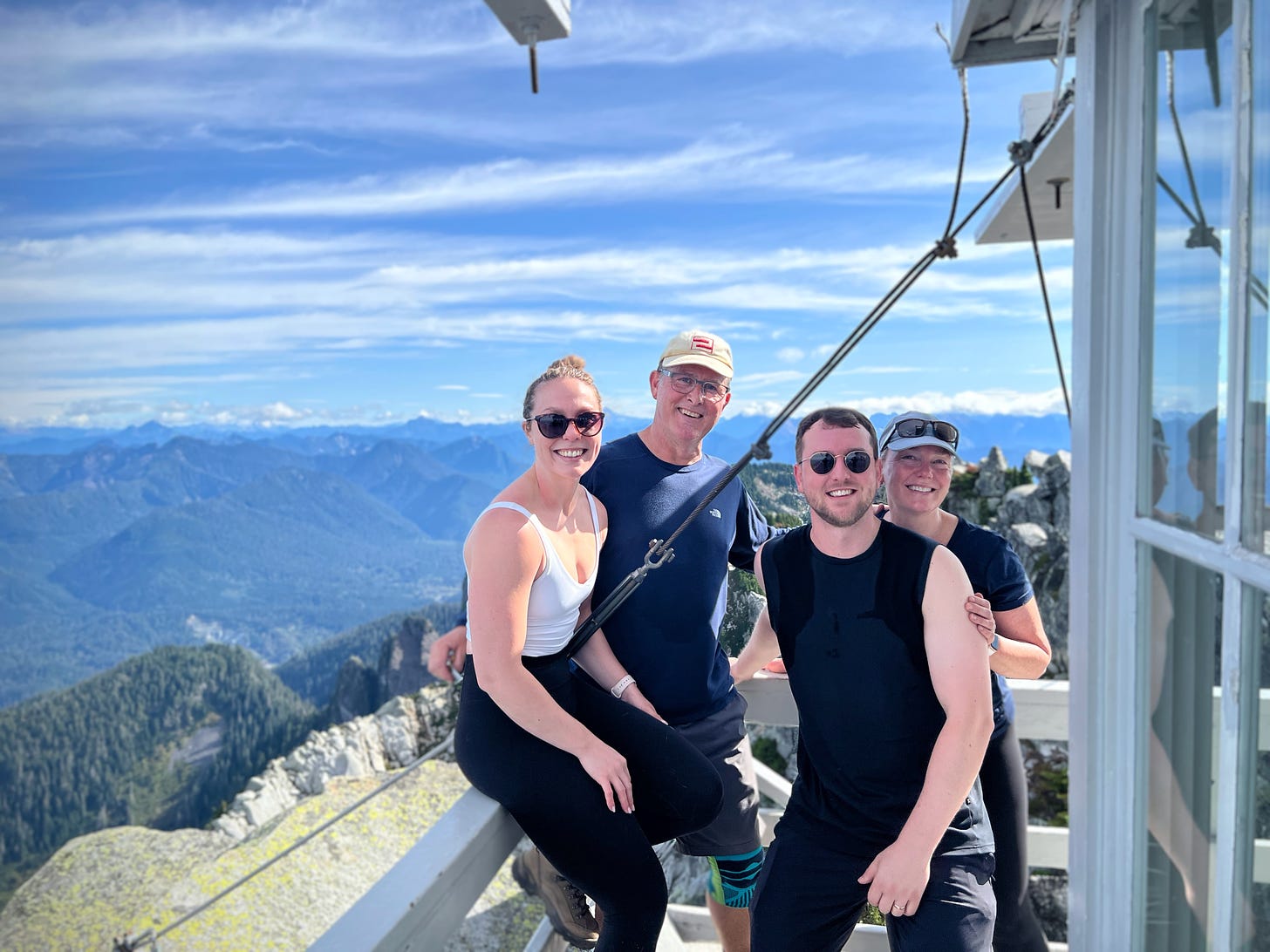
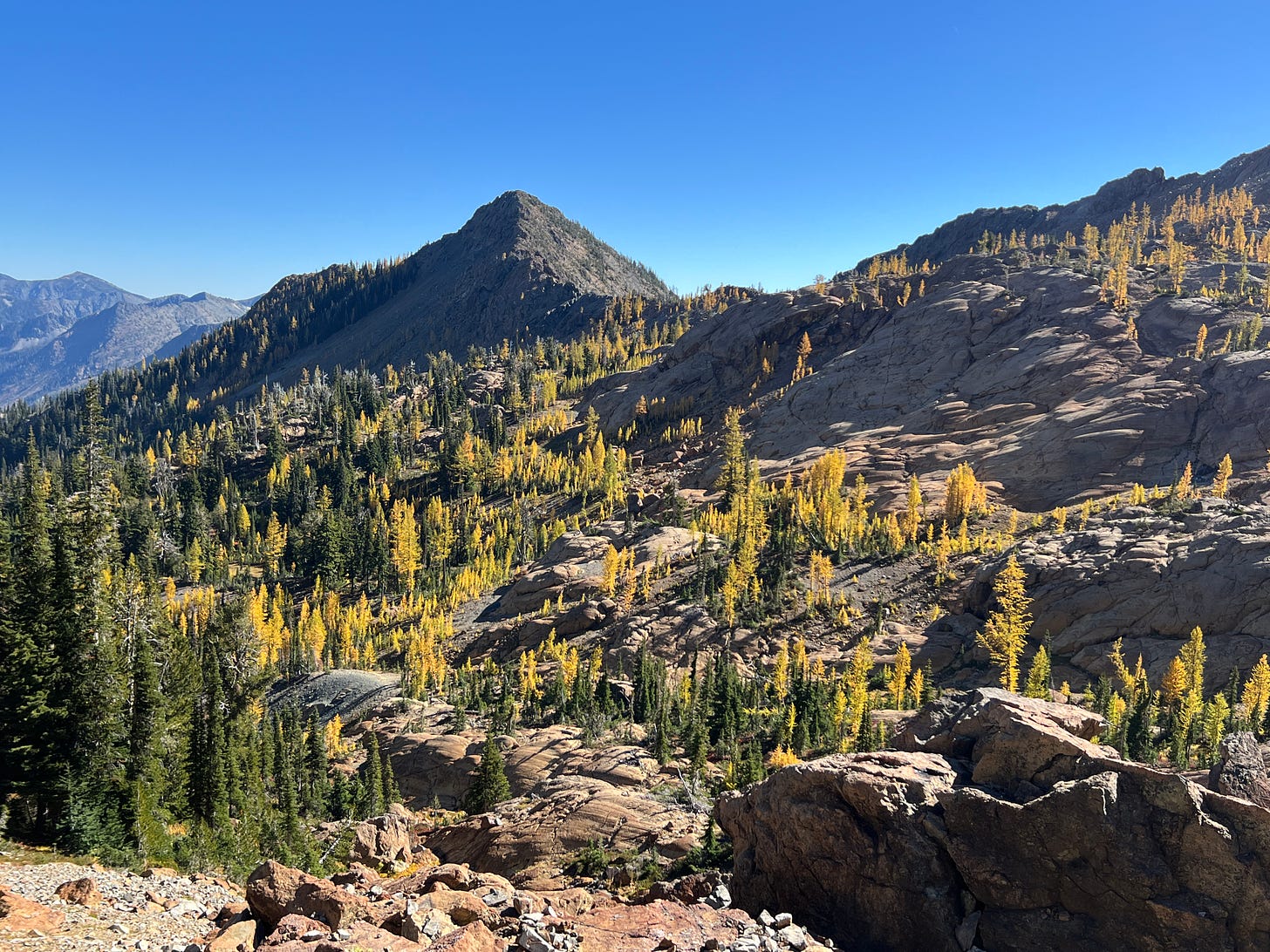
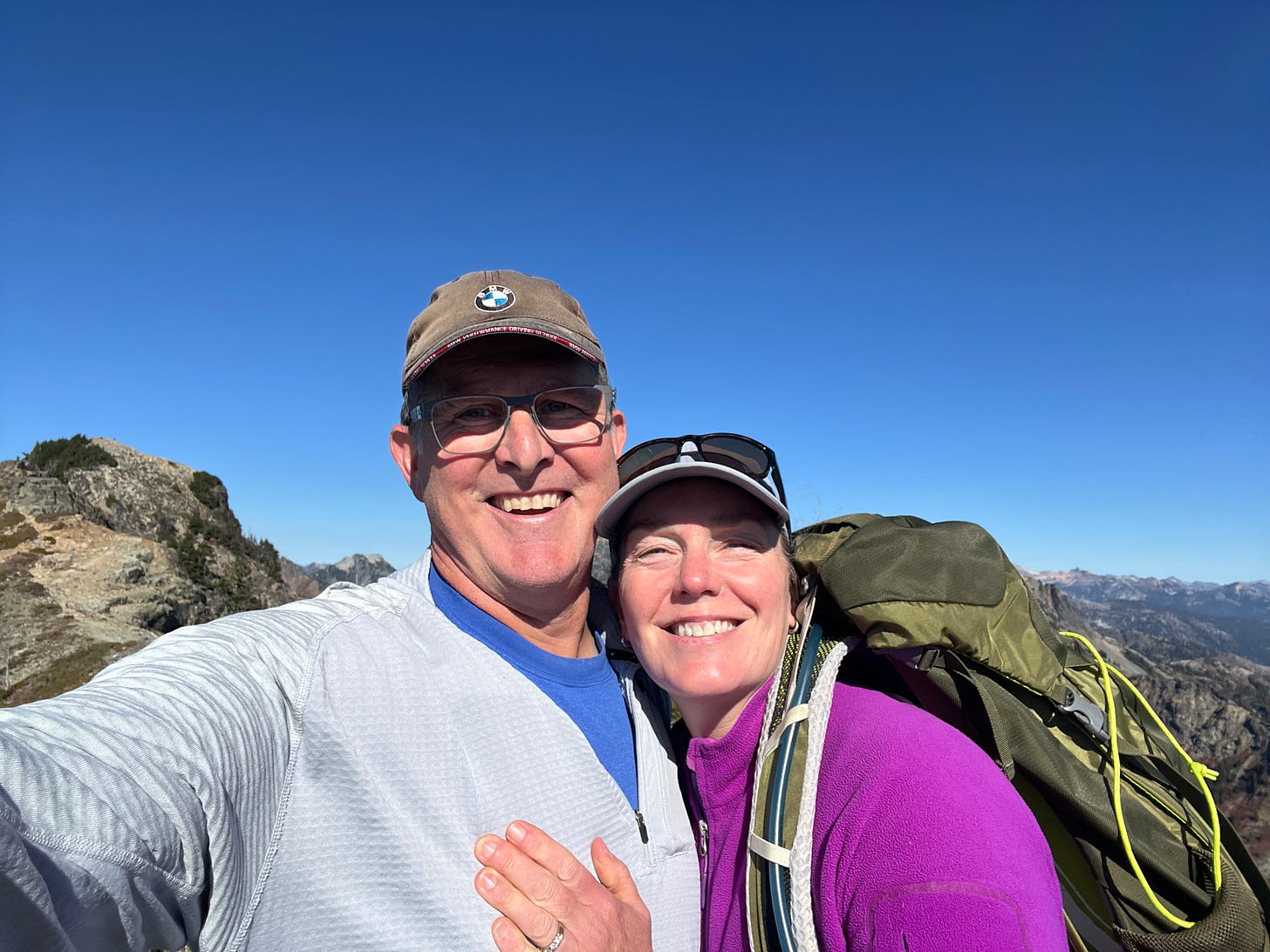
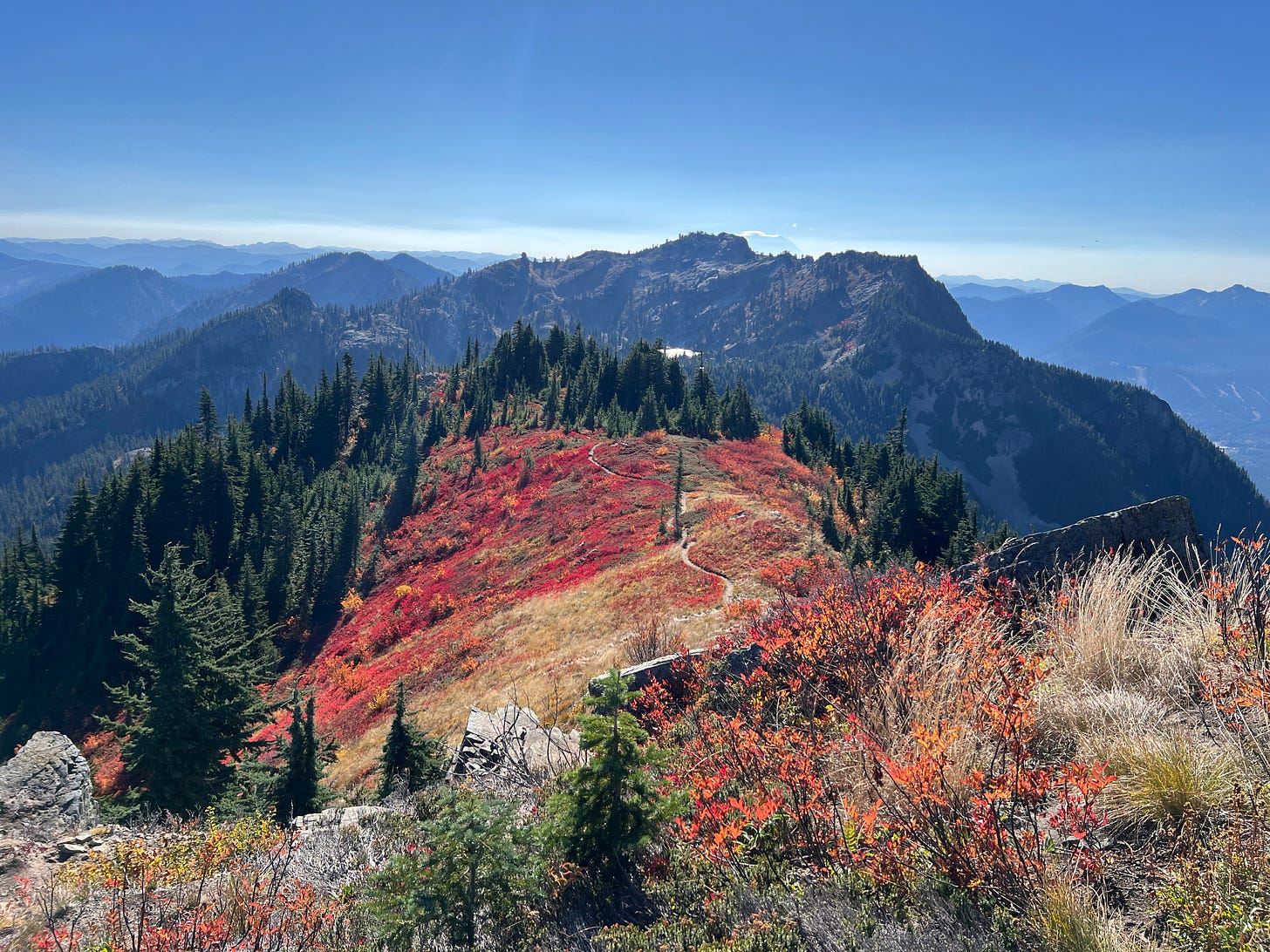
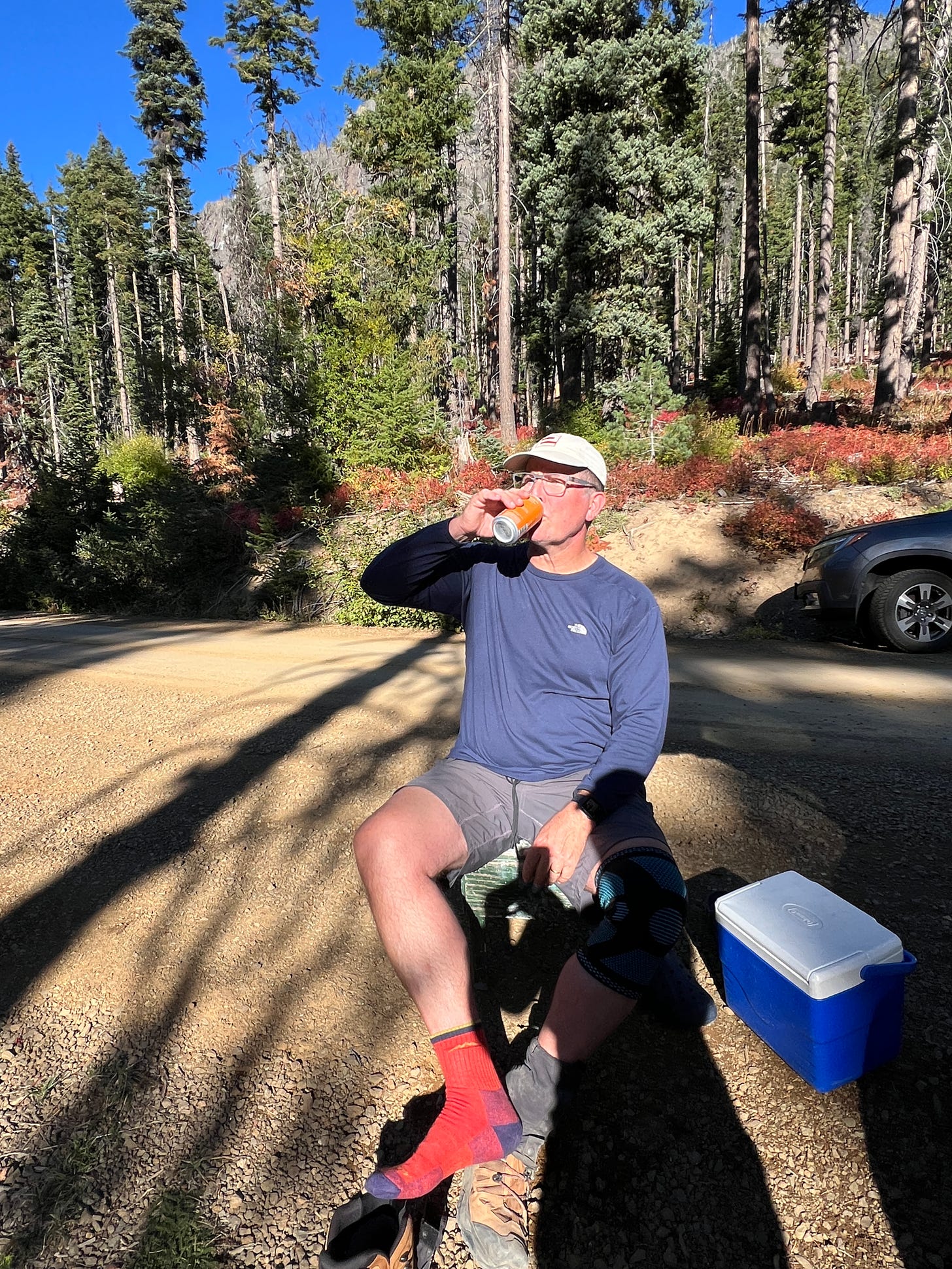
An ice cold beer after any strenuous endeavor is the nectar of the gods!
Wonderful story!